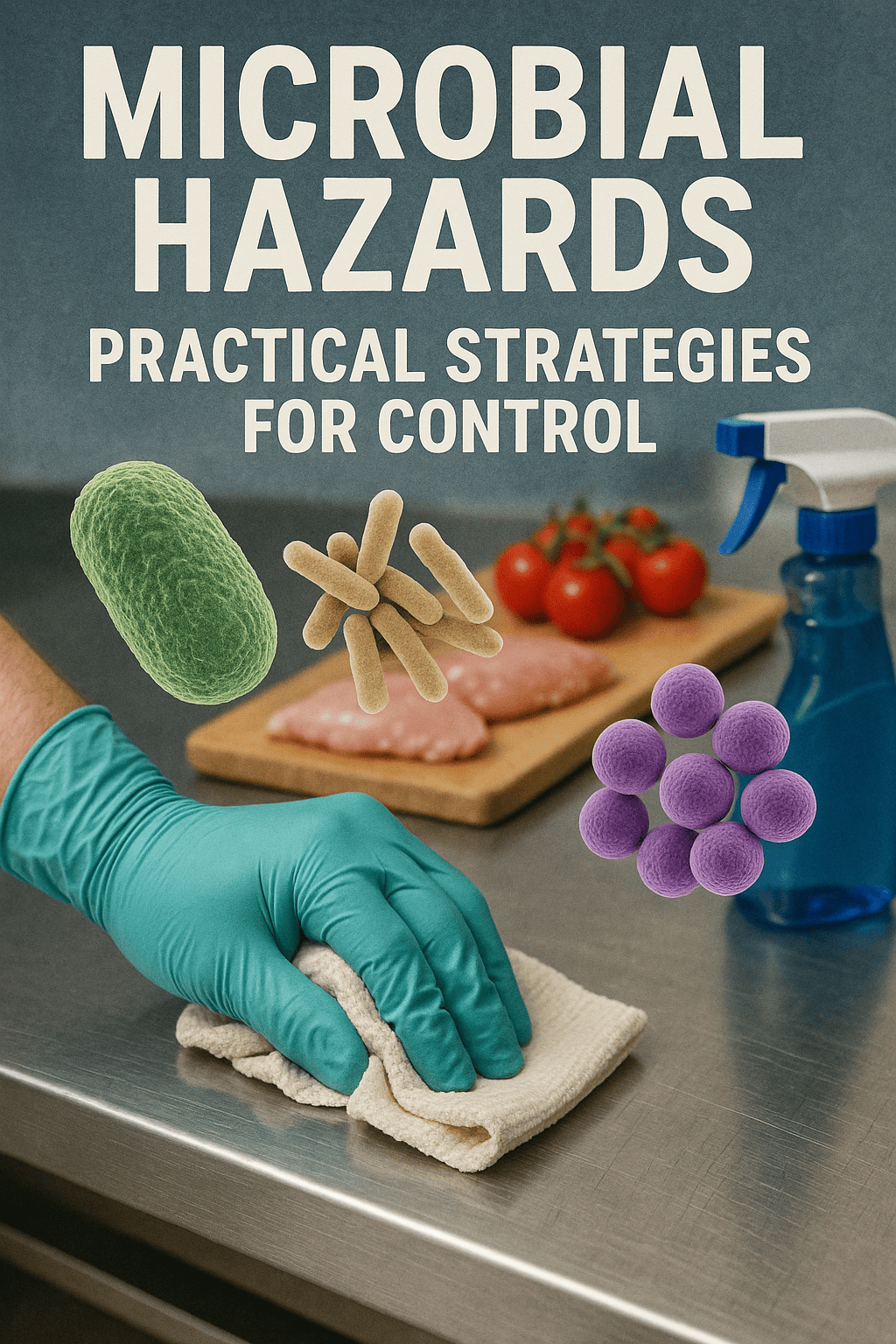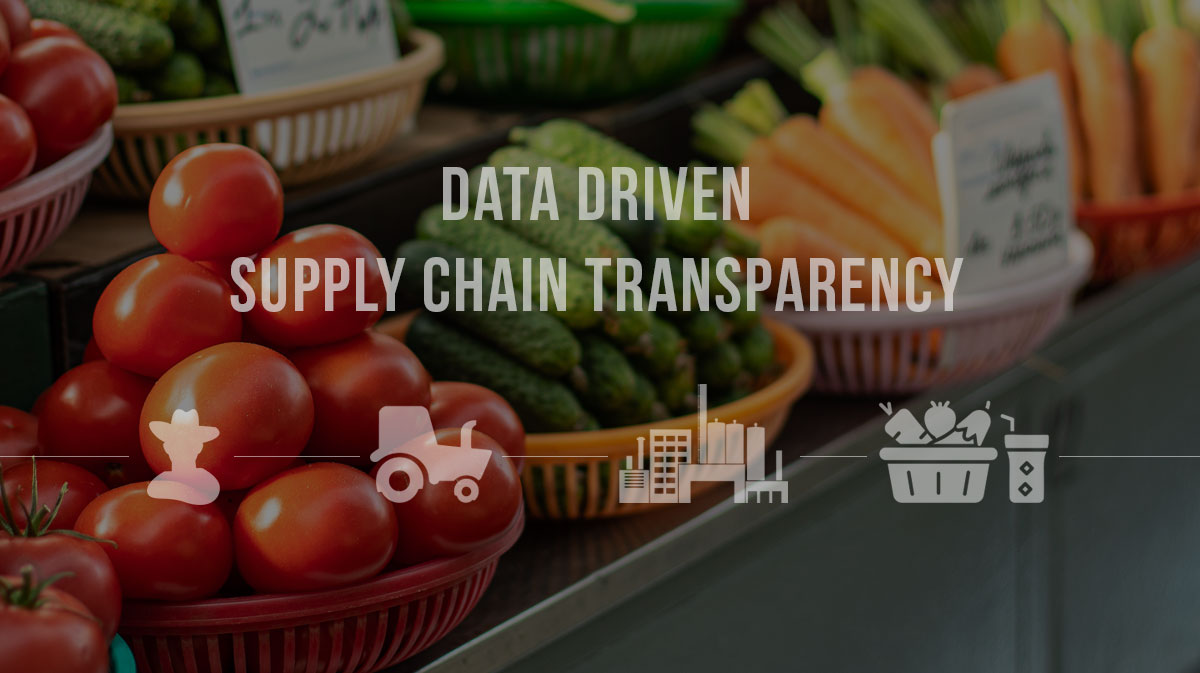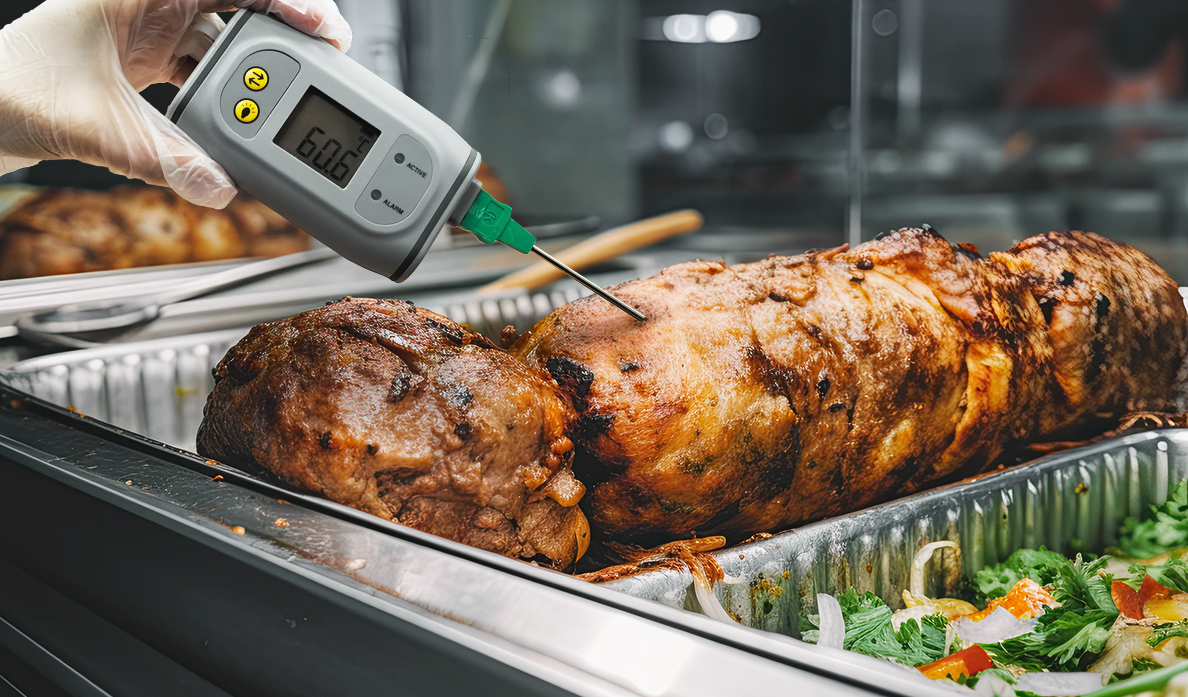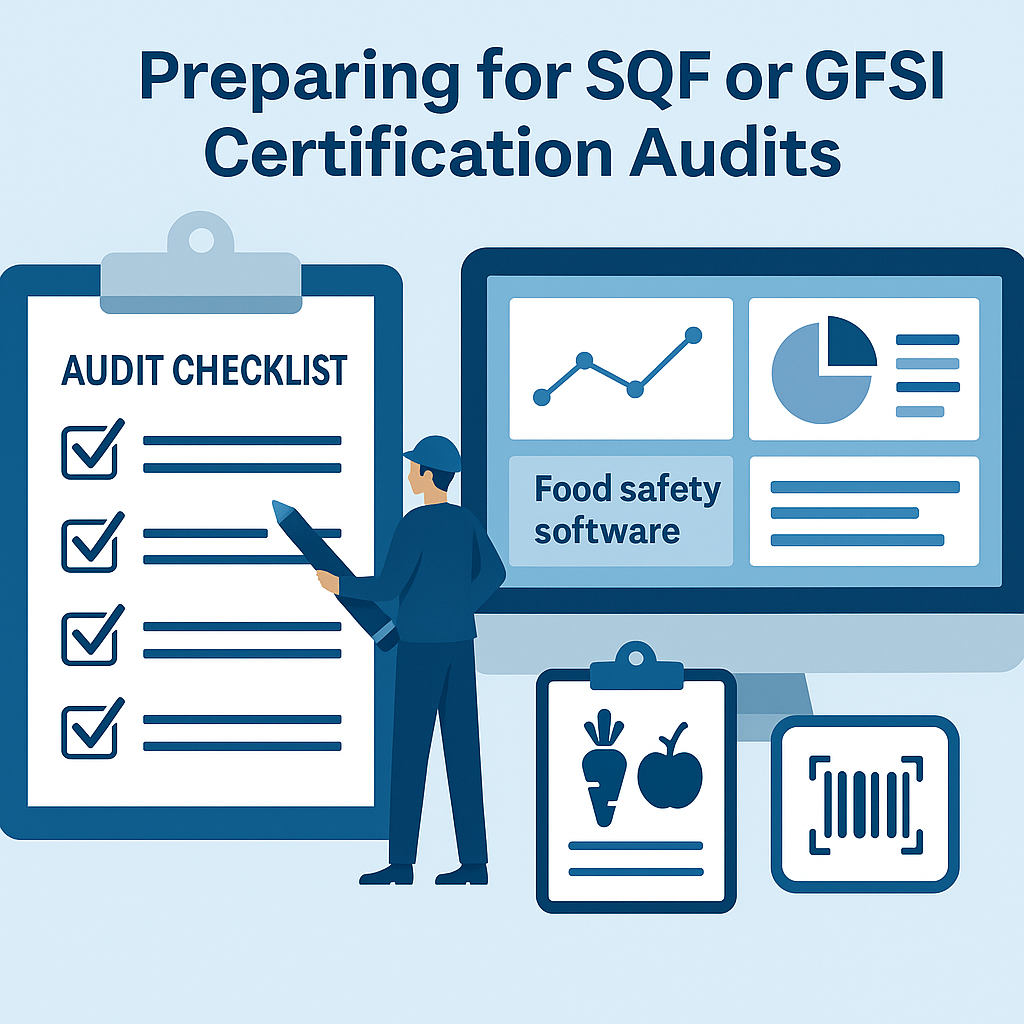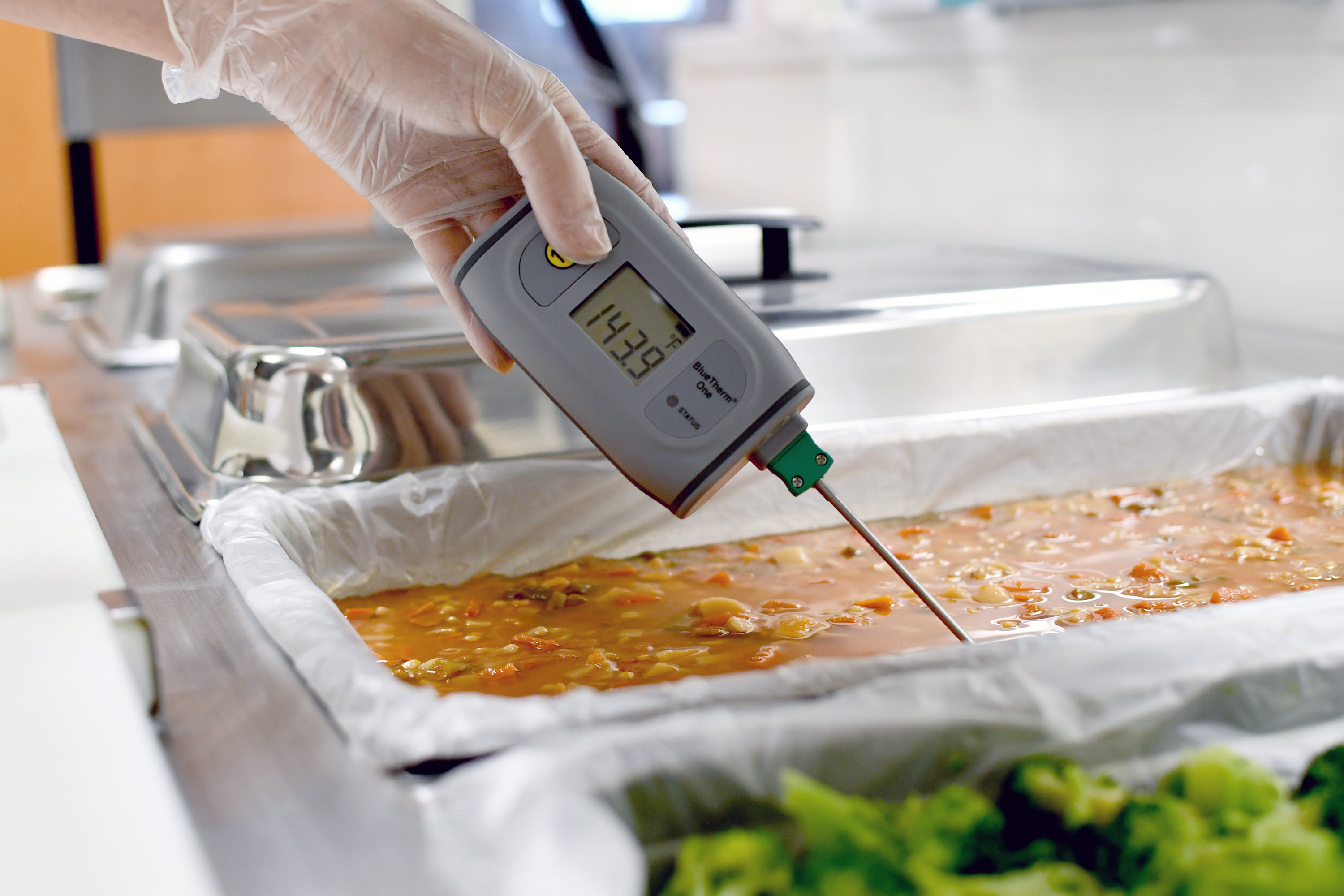Microbial hazards are the sharp edge of risk in the food industry. Label errors and minor non-conformities might cause headaches; pathogens shut plants down, trigger recalls, and damage brands you’ve spent years building.
If you’re responsible for Food safety – whether as QA, Operations, or C-suite – you don’t just need theory. You need a practical, system-level approach that can be executed on the floor, audited with confidence, and monitored in real time.
This article walks through:
-
What microbial hazards actually are and how they behave
-
Why traditional controls sometimes fail
-
A structured, step-by-step approach to microbial hazard control
-
Concrete examples by product type
-
How digital tools like food safety software and Food traceability software strengthen control and reduce risk
1. What Are Microbial Hazards – Really?
In practice, “microbial hazards” means any microorganisms or microbial by-products that can:
-
Make consumers sick (pathogens)
-
Accelerate spoilage and reduce shelf life
-
Produce toxins that remain dangerous even if the cells are killed
Key categories:
-
Pathogenic bacteria – e.g., Listeria monocytogenes, Salmonella, E. coli O157:H7, Campylobacter, Clostridium botulinum.
-
Viruses – e.g., Norovirus, Hepatitis A (often linked to poor hygiene or contaminated water).
-
Parasites – e.g., Cyclospora, Giardia, Trichinella (more product-specific but still critical).
-
Spoilage organisms – lactic acid bacteria, yeasts, molds that hit quality and shelf life.
-
Toxins – pre-formed toxins from certain bacteria (Staph aureus enterotoxins, botulinum toxin) and mycotoxins from molds.
These organisms don’t care about your org chart. They exploit:
-
Wet, hard-to-reach areas
-
Poor temperature control
-
Cross-contamination routes (people, equipment, air, water, ingredients)
-
Inconsistent sanitation and weak verification
If your controls have “holes” in any of those, microbes will find them.
2. Why Traditional Controls Sometimes Fail
Most facilities already have:
-
GMPs / PRPs
-
Cleaning and sanitation procedures
-
CCPs in their HACCP / PCP
-
Periodic environmental or finished product testing
Yet outbreaks and recalls still happen. The underlying problems are usually:
-
Fragmented information
-
Data in paper logs, Excel files, and email chains.
-
No real-time visibility for managers or C-level.
-
Trends (e.g., slow drift in sanitation effectiveness) are invisible until a failure occurs.
-
-
Inconsistent execution
-
SOPs exist, but actual practice varies by shift, line, or site.
-
Training is done once, not reinforced or verified.
-
-
Reactive, not preventive
-
Microbiological testing is treated as a “pass/fail” gate, not a source of trend information.
-
Corrective actions are local and tactical, not systemic.
-
-
Lack of traceability depth and speed
-
In a crisis, you need to answer: “Which lots, which customers, which SKUs, which ingredients?”
-
Without robust Food traceability software, this can take days instead of minutes – which increases recall scope and cost.
-
To fix this, you need both robust technical controls and a system that ensures discipline, day in and day out.
3. Pillars of Effective Microbial Hazard Control
Pillar 1: Product & Process Risk Assessment
Start with a clear microbiological risk profile for each product family:
-
Intrinsic factors: pH, water activity, salt, sugar, preservatives.
-
Extrinsic factors: storage temperature, atmosphere (MAP, vacuum), distribution time.
-
Process steps: kill steps (cooking, pasteurization), recontamination risks (slicing, packaging).
-
Consumer use: ready-to-eat vs. “cook before eating”.
This assessment drives:
-
Which hazards are reasonably likely to occur
-
Where to place CCPs or critical operational PRPs
-
What verification is actually needed (e.g., environmental monitoring for Listeria in RTE zones)
If this assessment is superficial, everything downstream will be misaligned.
Pillar 2: Hygienic Design and Zoning
Microbial hazard control is impossible in a badly designed environment.
Key actions:
-
Hygienic zoning
-
Separate raw vs. RTE vs. high-care areas with physical barriers and controlled flows.
-
Manage personnel, tools, air, and materials so they don’t “jump zones”.
-
-
Equipment design
-
Avoid dead legs, hollow rollers, sandwich points, and horizontal surfaces where water or product accumulates.
-
Use materials and designs that allow full disassembly and visual inspection.
-
-
Drainage and water management
-
Poor drain design is a classic Listeria reservoir.
-
Design flow away from high-care zones and keep floors dry as much as possible.
-
Even the best sanitation program can’t fully compensate for fundamentally flawed design.
Pillar 3: PRPs & Sanitation – Executed, Not Just Written
Your sanitation program must specify:
-
What is cleaned (equipment list, zones, structures)
-
How it is cleaned (chemicals, concentration, time, temperature, mechanical action)
-
When it is cleaned (frequency per shift/day/week)
-
Who is responsible (clear accountability)
-
How results are verified (visual, ATP, micro testing, swabbing)
Common gaps:
-
“Shadow procedures” used by operators that deviate from the SOP
-
Shortcuts during time pressure (e.g., skipping steps, reducing contact time)
-
Poor documentation of deviations and corrective actions
Using food safety software to digitize sanitation checklists, capture data in real time, and escalate missed tasks automatically sharply reduces this risk.
Pillar 4: Time–Temperature Control
Time–temperature abuse is one of the fastest ways to lose control.
Key focus areas:
-
Cold chain — raw materials, intermediates, finished product, and returns.
-
Cooling curves — especially in cooked or heat-treated products.
-
Hot-holding — for products kept warm prior to service or packing.
Practical strategies:
-
Install calibrated probes and data loggers at critical points.
-
Use alerts for temperature excursions (SMS, email, dashboard).
-
Trend data to see if you’re consistently “on the edge” even when within spec.
Digital monitoring integrated into your food safety system can turn temperature logs from dead paperwork into live risk indicators.
Pillar 5: Supplier Controls & Raw Material Hazards
Microbial risk is often imported.
Steps:
-
Categorize suppliers and ingredients by microbiological risk.
-
Define incoming requirements (CoAs, micro limits, sampling plans).
-
Audit high-risk suppliers with targeted questions on their HACCP, sanitation, zoning, and environmental monitoring.
-
Track supplier performance over time (non-conformances, OOS results, complaints).
A digital supplier management module lets you link non-conformances, micro results, and complaints directly to supplier records, so you see which partners are systematically risky.
Pillar 6: People, Training, and Culture
Even the best designed system fails if people don’t believe it matters.
Key elements:
-
Targeted training – not just “GMP 101,” but line-specific, hazard-specific, in the context of their daily tasks.
-
Clear expectations – “this is non-negotiable” items (e.g., handwashing, zoning rules, rework handling).
-
Behavioral reinforcement – supervisors who model behaviors and give immediate feedback.
-
Incident transparency – everyone understands what a recall costs and how easily it can start with a shortcut.
Documenting training, tracking competencies, and linking them to deviations in a digital platform closes the loop between people and performance.
Pillar 7: Environmental Monitoring & Verification
For high-risk areas, especially RTE, an Environmental Monitoring Program (EMP) is non-optional.
Core elements:
-
Zoning of sampling sites
-
Zone 1: food contact surfaces
-
Zone 2: close to product, non-contact
-
Zone 3–4: broader environment
-
-
Organisms of concern
-
Listeria spp., Listeria monocytogenes for chilled RTE
-
Indicator organisms (e.g., Enterobacteriaceae) for hygiene
-
-
Frequency and rotation
-
Mix of routine sites and rotating sites to avoid blind spots.
-
-
Escalation rules
-
Clear decision tree when a positive is found: containment, intensified cleaning, resampling, potential product hold.
-
Managing EMP on paper is a nightmare. Digital tools allow you to:
-
Map samples to equipment, zones, and dates
-
Automatically flag overdue sampling
-
Trend by area, organism, and season
-
Document corrective actions and resampling outcomes
That transforms EMP from a box-ticking exercise into a powerful early-warning system.
Pillar 8: Data, Digitalization, and System Discipline
At a certain scale, spreadsheets and paper shift logs stop working. You need:
-
Single source of truth for CCPs, PRPs, sanitation, EMP, training, supplier performance.
-
Real-time dashboards for QA and Operations.
-
Traceability from farm to fork, supported by Food traceability software.
-
Automated alerts and workflows for out-of-spec results and overdue tasks.
Modern food safety software platforms combine:
-
Digital checklists and records
-
IoT integrations (sensors, temperature loggers)
-
CAPA workflows
-
Traceability and recall simulation
-
Audit-ready reporting
For C-level leaders, this isn’t just a technical upgrade – it’s risk and cost management. Fewer crises, faster response, and lower cost of poor quality.
4. A Step-by-Step Framework for Microbial Hazard Control
Here’s a practical implementation roadmap you can adapt to your facility.
Step 1: Map Your Processes and Products
-
Build or update detailed process flows for each product family.
-
Identify all points where the product is exposed, stored, transported, or held.
-
Capture all rework streams and “off-process” paths (rework tanks, rework bins, returns).
Goal: no “mystery pipes” or uncharted flows where risk can hide.
Step 2: Perform a Microbiological Hazard Analysis
For each step and each product family:
-
Identify potential microorganisms (pathogens and spoilage).
-
Evaluate likelihood and severity given your actual environment and consumers.
-
Decide whether the hazard is controlled by a CCP, operational PRP, PRP, or external prerequisite (e.g., supplier control).
Document the logic. Ambiguity here leads to confusion later when auditors or regulators ask “why?”.
Step 3: Define or Rebuild Your Control Measures
For each significant hazard, define:
-
Control point (where it’s controlled)
-
Type of control (CCP vs. PRP vs. operational PRP)
-
Critical limits or operational criteria
-
Monitoring procedures
-
Corrective actions
-
Verification activities
If you’re already certified (HACCP, GFSI, etc.), this is an opportunity to clean house: remove legacy controls that add paperwork but no value and tighten those that matter.
Step 4: Strengthen Sanitation and Hygienic Design
Use a structured review:
-
Walk your plant with QA, Maintenance, and Operations.
-
List all areas/equipment with:
-
Difficult access or disassembly
-
Persistent moisture or product buildup
-
“We always have issues here” reputation
-
-
Rank by risk and implement:
-
Design modifications (e.g., sloping, welding hollow areas, replacing problem components)
-
Revised sanitation procedures and frequencies
-
Enhanced verification (ATP, micro swabs)
-
Track improvements over time using your digital system so you can show before/after performance.
Step 5: Implement or Upgrade Environmental Monitoring
-
Define zones and target organisms based on your risk assessment.
-
Start with a level you can manage and scale up.
-
Use your software to plan sampling, record results, and trigger corrective actions.
Don’t just look at “pass/fail.” Use trending:
-
Repeated low-level positives in the same area? That’s a reservoir.
-
More frequent positives on certain shifts? That’s a training or execution issue.
Step 6: Digitalize Critical Records and Monitoring
Prioritize digitization where microbial risk and data volume intersect:
-
CCP monitoring (time, temperature, pH, etc.)
-
Sanitation checks and pre-op inspections
-
EMP results and corrective actions
-
Non-conformance and CAPA tracking
-
Supplier CoAs and micro results
Benefits:
-
Reduced human error (missed checks, illegible entries, back-dated forms).
-
Faster detection of patterns.
-
Easier internal and external audits (everything in one place, searchable).
Step 7: Build Microbial Risk into Your Culture
-
Use real incidents (yours or industry cases) in toolbox talks.
-
Translate risk into concrete impacts: lost production days, destroyed inventory, brand damage.
-
Celebrate good catches: when someone stops a potential food safety failure, treat it as a win.
Reinforce the message: “We don’t get paid to ship product; we get paid to ship safe product.”
Step 8: Test Your Recall and Crisis Response
Microbial hazards become real when they hit the market.
-
Run at least one mock recall per year:
-
Start from a finished lot and trace back to ingredients, processes, and forward to customers.
-
Measure time to identify scope and impacted customers.
-
-
Review results with leadership:
-
Where did information slow down?
-
Which decisions took too long due to missing data?
-
If you’re using robust Food traceability software, a recall simulation should be a matter of minutes, not days.
5. Practical Examples
Example 1: RTE Salad Facility
Risks: Listeria, Salmonella, spoilage organisms on fresh produce.
Key controls:
-
Rigorous raw material supplier verification and testing.
-
High-care zoning for post-wash and packaging areas.
-
Aggressive EMP for Listeria in drains, conveyor frames, belts, slicers.
-
Tight cold chain from post-pack to retail.
Digitalization focus:
-
EMP planning and trending.
-
Sanitation task management.
-
Temperature monitoring and alerts in chillers and distribution.
Example 2: Small Industrial Bakery
Risks: Molds and yeasts, Bacillus cereus in some fillings, allergens (micro not the main issue but linked).
Key controls:
-
Strict control of water activity and baking parameters.
-
Environment and air quality in cooling and slicing/packaging areas.
-
Sanitation of slicers, conveyors, and packaging lines to prevent mold hotspots.
Digitalization focus:
-
Preventive maintenance and sanitation scheduling tied to micro results.
-
Trending of complaints and returns for mold.
-
Batch tracking for ingredients and finished product.
Example 3: Cooked RTE Meat Plant
Risks: Listeria monocytogenes, Salmonella, Clostridium perfringens.
Key controls:
-
Validated cook schedules (time/temperature) as CCPs.
-
Controlled cooling curves to prevent spore germination.
-
Strict separation between raw and cooked areas.
-
EMP heavily focused on RTE slicing and packaging lines.
Digitalization focus:
-
Automated recording of cook temperatures and times.
-
Cooling curve monitoring (integrated probes and data loggers).
-
EMP mapping and trend analysis.
-
CAPA workflows when a positive is detected.
6. Turning Strategy into Action – and Seeing It Live
Microbial hazard control is no longer just a QA project. It’s a business risk management strategy that:
-
Protects revenue and brand equity
-
Reduces waste and rework
-
Makes audits and certifications smoother
-
Builds trust with customers and regulators
Paper systems and scattered spreadsheets can’t keep up with the complexity of modern supply chains, regulatory expectations, and customer demands. This is where food safety software and Food traceability software become strategic tools, not just “IT projects.”
If you want to see how a digital platform can:
-
Centralize your microbial hazard controls
-
Automate monitoring and alerts
-
Simplify EMP, sanitation, and CCP records
-
Make recalls and mock recalls dramatically faster
you can request a live demo here:
ð Book a demo: https://normex.ca/demo
From there, you can evaluate concretely how digitalizing your Food safety system will strengthen your microbial hazard control, reduce risk, and give leadership real-time visibility on what matters most: the safety of the food you put on the market.

